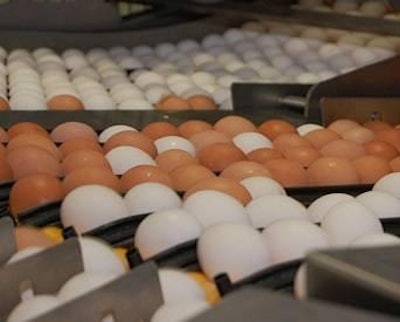
A special report, released by Maro Ibarburu, business analyst, Iowa State University, on May 8, addressed the question posed by numerous individuals and groups, including Egg Industry magazine: “What impact will hen losses resulting from the avian influenza outbreak have on U.S. wholesale egg prices?”
The answer given is that it is too early to tell.
At the time the report was prepared, the U.S. layer flock had been reduced by 22 million hens as a result of the outbreak. Commenting on the hen losses in the report, Ibarburu said: “This results in a significant reduction in the egg supply and perhaps the largest short-term change the U.S. egg market has ever experienced.”
The report then states that “it is too early to tell” what the impact will be on egg prices and then explains why the center believes it is too early. “While the U.S. continues to lose egg supply in this situation, there are factors in play that may also shift the demand for eggs. These include both domestic and export market considerations counter the supply impact on price,” Ibarburu said.
The Egg Industry Center, which is hosted by Iowa State University, prepares monthly cost estimates and analysis for the U.S. egg industry. These analyses also project future wholesale egg prices based on USDA data for hen inventories, replacement chick hatching data, and historical egg price information.
Egg demand variables
Demand for eggs by U.S. consumers could be negatively impacted by the avian influenza situation if fear is created around the consumption of eggs, according to the report. Government agencies and universities have initiated programs to help educate consumers regarding avian influenza and consumer health. This type of depression in demand for poultry products has been seen in other countries affected by avian influenza, particularly in Asia.
Ibarburu also puts forth the possibility that demand for eggs could actually increase in response to fears of shortages, along the lines of the disappearance of staples like milk and break from stores when storms threaten to disrupt consumers’’ access to stores.
On the export side, the length of any bans on importation of eggs and egg products produce either in the U.S. as a whole or in regions of the U.S. actually impacted by the outbreak can play a somewhat unpredictable role in how much export volume is curtailed. Any reduction in export volumes for eggs and egg products will help to mitigate the loss in domestic supply caused by the laying farm depopulations.
The egg price model
Ibarburu said: “The Egg Industry Center model used in the production of the monthly market reports is built to project prices that are related to small fluctuations in the market. Even when dealing with small fluctuations, there can be a degree of uncertainty around the projected values. A large fluctuation such as the loss of millions of laying hens was never considered in the design of the model that is currently in use. As a result, the accuracy of any projection would likely be grossly inaccurate.”


















